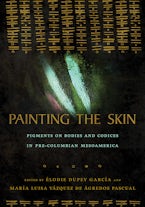
Painting the Skin
Pigments on Bodies and Codices in Pre-Columbian Mesoamerica
Published by: The University of Arizona Press
Imprint: The University of Arizona Press
384 Pages, 180.00 × 256.00 × 25.00 mm, 81 Black & white illustrations, 2 16-page colour inserts